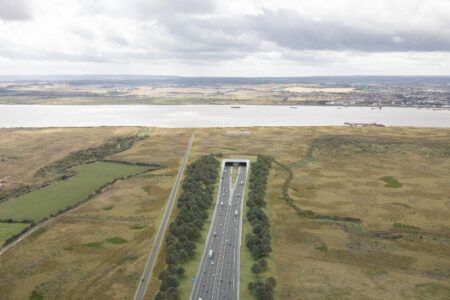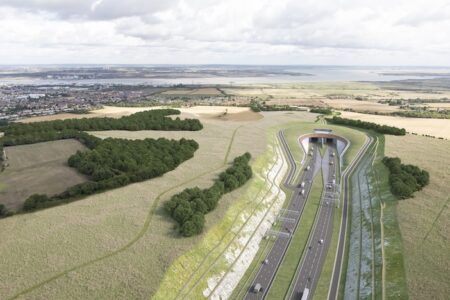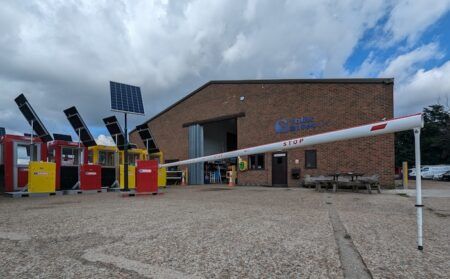Highways England (HE) has released an engineering video to show how they intend to tackle the challenge of installing two 1,000 metric ton bridges over a very busy road while keeping traffic disruptions to a minimum – and it involves a very big, remote controlled platform on wheels.
HE is upgrading a 21 mile (33.8km) stretch of the A14 major trunk road between Cambridge and Huntingdon to three lanes in each direction, including a brand new 17 mile (27.4km) bypass south of Huntingdon, with four lanes in each direction between Bar Hill and Girton. The £1.5bn (US$1.9bn) project, which includes 34 bridges and main structures, will add additional capacity, boost the local and national economy and cut up to 20 minutes off journeys. Work on the project officially started in November 2016 and the new road is expected to open to traffic by the end of 2020.
Part of the scheme involves the installation of two new bridge decks carrying slip roads over the A14, which will replace an existing bridge that is no longer suitable and will be demolished in 2019. The new bridges will be located at Bar Hill, and form a new, improved junction that will connect the A14 to the future local access road between Cambridge and Huntingdon, as well as to the existing local road between Bar Hill and Longstanton (B1050). Rather than construct the new bridges in-situ, which would have caused major disruption to traffic on an important and heavily used section of England’s Strategic Road Network (SRN), the agency has chosen to build them at the side of the road and then wheel them into place.
This is exactly what the A14 Cambridge to Huntingdon upgrade team has been doing over the past few months. They have built four abutments to support the new bridges as well as two bridge decks at the side of the live carriageway, and are now ready to wheel the 144ft-long (44m) bridge decks into place on top of the supporting abutments. To carry out the bridge deck deployment work safely, the A14 will need to be closed between September 14 and 17. The installation process will involve the use of a massive remote-controlled mobile platform that will transport the new bridge decks from the off-road construction site to the abutments, and then lower them into place.
“Redesigning and building the Bar Hill junction was identified from the start of the project as one of the main challenges we would have to tackle,” noted David Bray, HE’s project director for the A14 Cambridge to Huntingdon upgrade. “I am delighted that we’ve found a way to build the two bridges while keeping the A14 open as much as possible and disruption for people locally and road users to a minimum. And I am also excited that we’re using such an innovative solution to our challenge – that’s what makes my job so interesting!”




